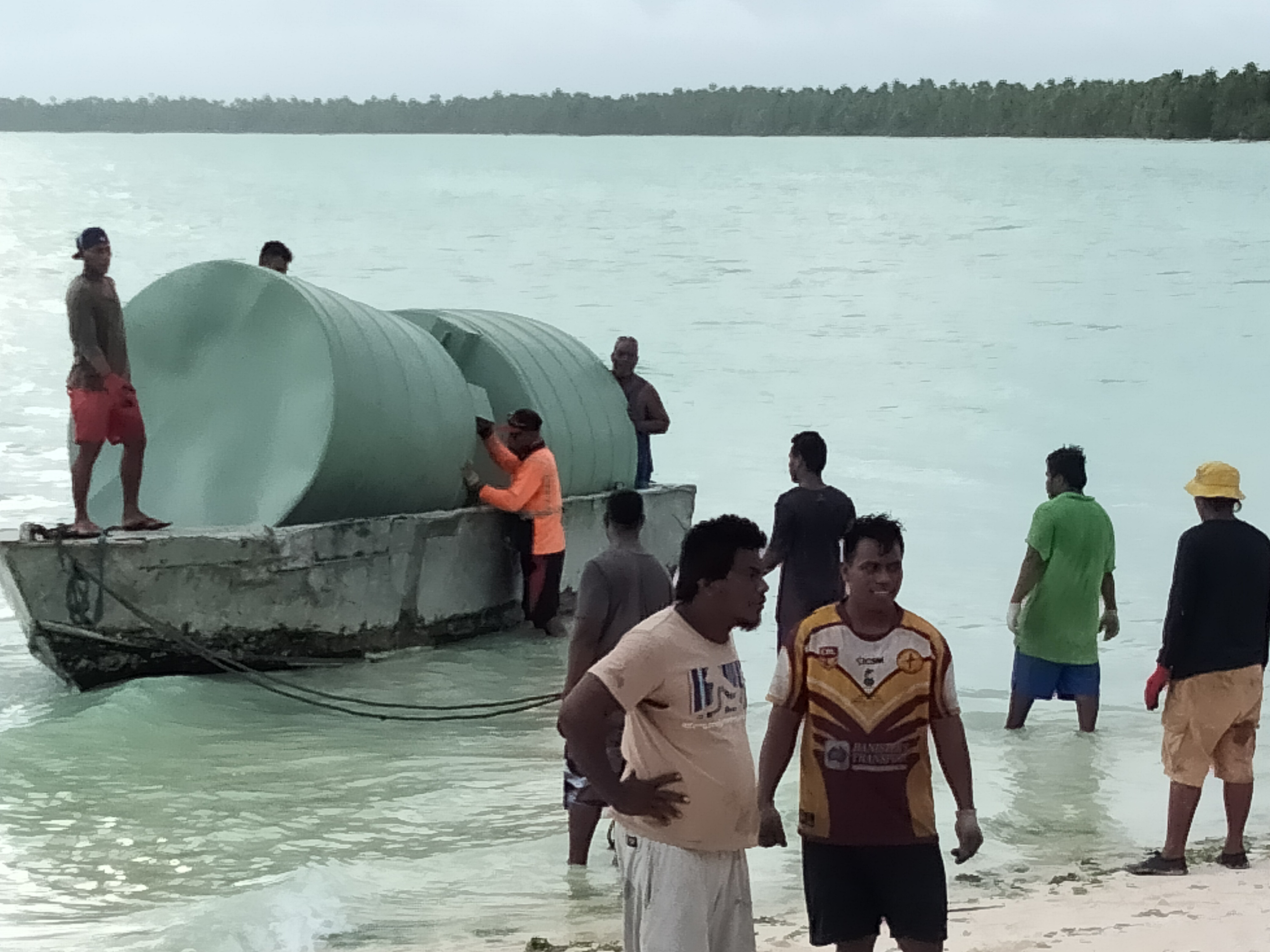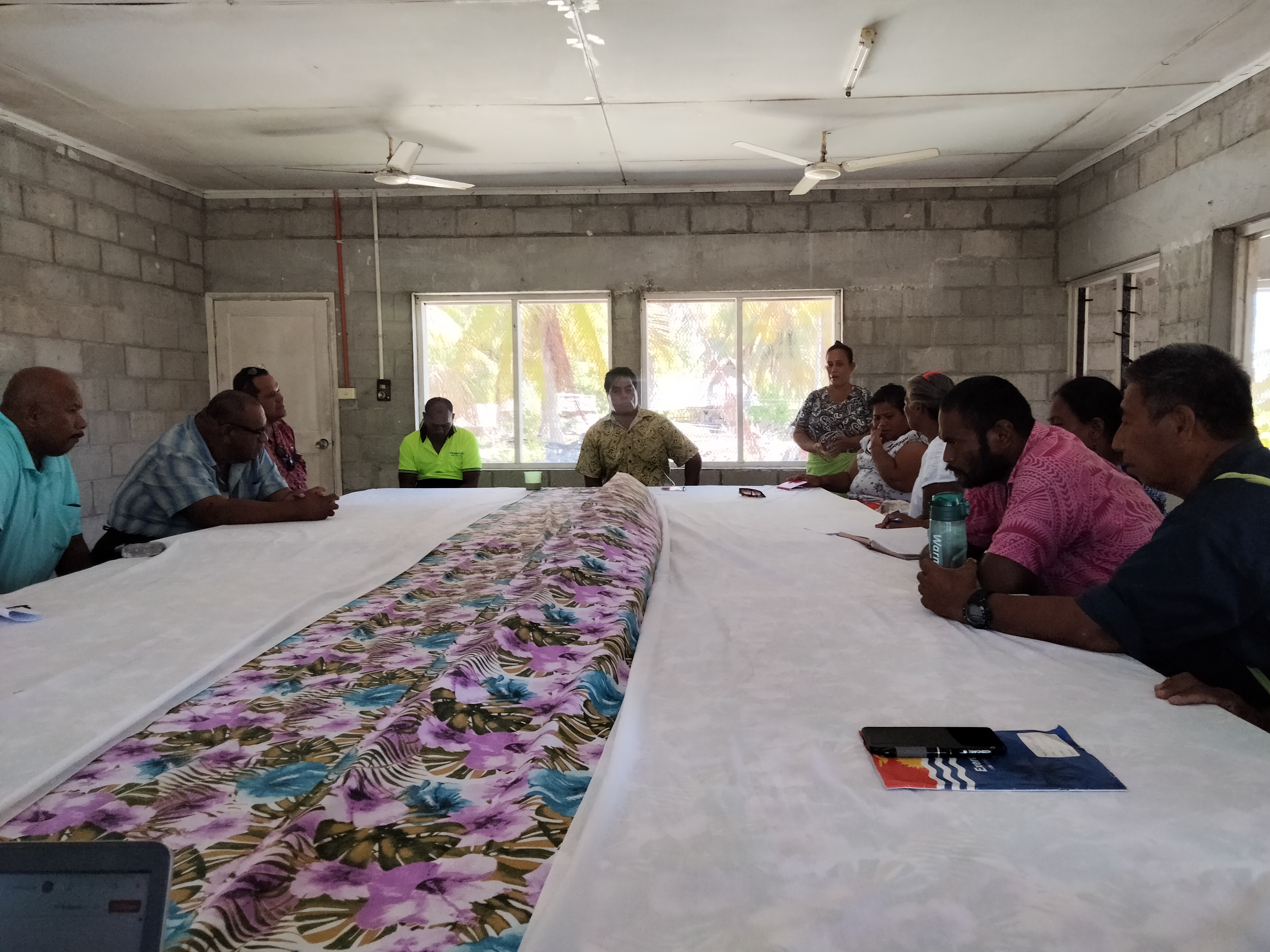Nei Tabono Tebwaitonga 36 ana ririki ao Burantetaake Iaokiri, 21 ana ririki bon taan mwakuri ngaiia ngkoa n te karikirake ae te Kiribati Outer Islands Food And Water Project ke n kinaaki n arana ae te KOIFAWP. Aine aikai are a moan katabwenai nakoa n aia tabo n mwakuri aika a boou bwa Nei Tabono Tebwaitonga e riki bwa te moan aine n taua te nakoa ae te Outer Islands Water Technician (OIWT) i Kiribati n ana abamwakoro ae Tabiteuea Meang are e mena iaan te MISE ao Nei Burantetaake Iaokiri bwa te moan n aine n riki bwa te Nursery Woman i Kiribati n ana abamwakoro ae Onotoa are e mena iaan te Ununiki, MELAD.
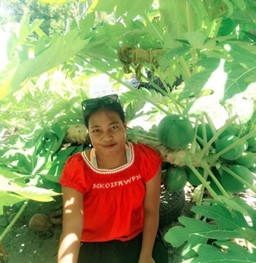
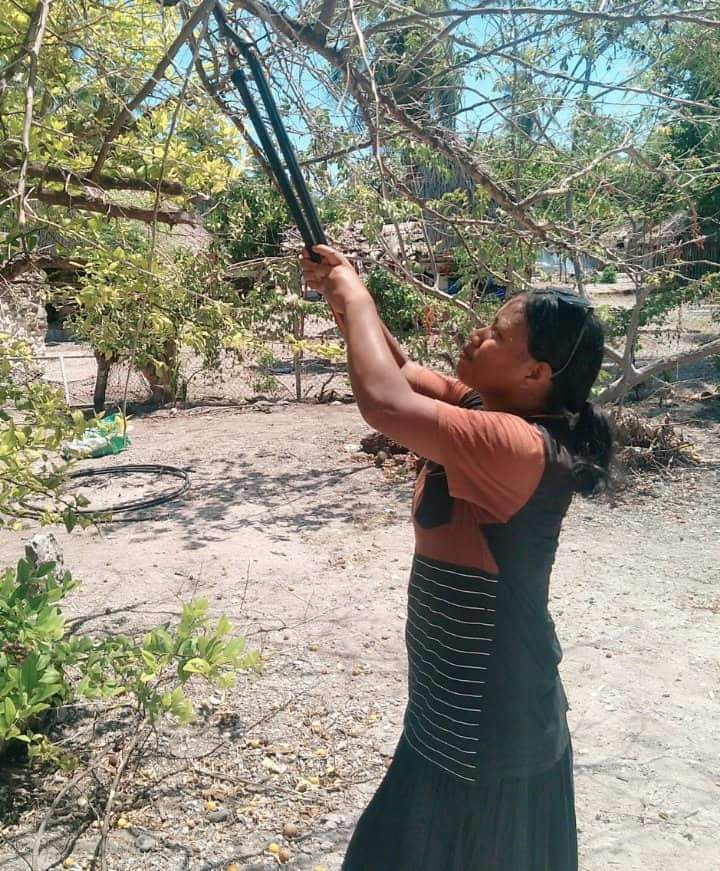
Burentetaake Iaokiri- 21 yeard old. First Nursery Woman from Onotoa Island in Kiribati
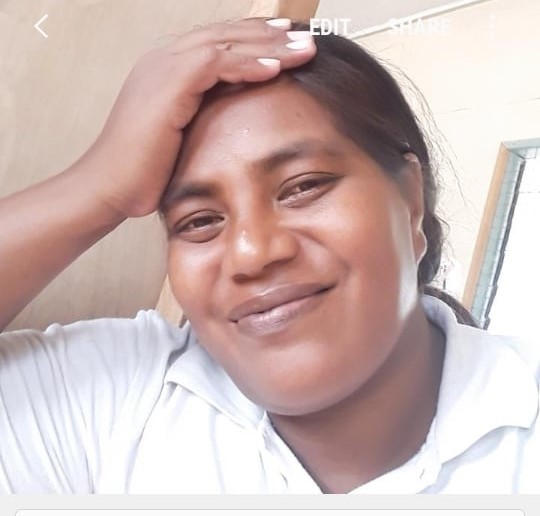
Tabono Tebwaitonga-36 years old. The first Outer Island Water Technician from Tabiteuea North in Kiribati.
N akean te raraoma man aia tibwatibwa aine aikai ao a kaotia bwa te reirei, te kataneiai ao aia mwakuri aika a tia n rinanoi inanon aia tai n mwakuri n te KOIFAWP, e a anganiia rabakau ma te atatai are e a buokiia n karekea nakoaia are a riki ngkai ngaiia bwa taian moan aine n nakoa aika te OIWT ao te Nursery Officer i Kiribati ake a bon ti kaainaki irouia mwane ma ngkoa. Aio are e bon riki bwa te rongorongo ae e raka ao ni boou n karakin Kiribati.
E tibwatibwa ana namakin Tabono ao n taku, “Ngai bon te aine ae I a tia n iein ao n kariki ao n tia n makuri n te KOIFAWP man 2018 nakon 2020 n riki iai bwa te Community Facilitating Officer n au kaawa ae Terikiai Tabiteuea Meang. N September 2020 ao I a reke nakon nakoau ae te Outer Islands Water Technician (OIWT) iaon abau ae Tabiteuea Meang. I kakatonga ao man kakabwaia n tia n riki bwa te tia mwakuri n KOIFAWP are ngaia e wantongaai n rabwakau n taian reirei ake a karekei man KIT ibukin te plumbing are ngaia e a buokai n au tai n ukeuke n kamaran nakoa tabon au been n karaoan te ukeuke ao ngaia ae ia riki ngkai bwa te moan aine iaon Kiribati n riki bwa te OIWT. Ai bon bwanaau n karabwarabwa nakon te karikirake ae te KOIFAWP are e a tia n uarokoai ao n karokoai n nakoau ae I mena inanona ngkai. I bon rang rotaki n te kukurei ao n karabwa Uean te maiu ibukin tibwangau aio. E a koro nanon miiu are I mamataaiakiniia ngkoa aine aika aranaki bwa a karaoi mwakuri n mwane. N te tai aio ao I a reke bwa te moan aine n nakoau ae te OIWT. Au kakaewenako nakoia aine bwa kam na riai n aki maaku ke n maama n niniianako taian tabo n mwakuri ake ko nano iai bwa ti te arona ngaira ma mwane”.
Nei Burantetaake Iaokiri e tibwatibwa naba rotakina n te kukurei ao te kakaitau ngke e kaongoaki bwa e a reke bwa te moan aine n riki bwa te Nursery Officer mai Onotoa iaon Kiribati ao man taku, “I aki kakoaua ngke I a tuangaki bwa I a reke imwiin te ukeuke are e karaoaki ibukin te Nursery Officer. Mwaitira n ukeuke n te tai arei bon 26 bwa 6 mwane ao 20 aine. E bukibuki mwanawau ngke e nang bo te ukeuke ma ngke I kauka te beeba ao e a bon tei naba imatau ara mwakuri ake ti kakaraoi n te KOIFAWP. Taian reirei ma kataneiai iaon te kamkamka ma te aron te kabwebwe ao n reitaki ma tuoan te mwatai iaon te kamwaanga are bon ngaia oin tabera n te KOIFAWP, bon kanoan raoi ara ukeuke. I a bon anga bwanaau n karabwarabwa ao n kakaitau nakon te KOIFAWP ibukin wantongakiu n te rabakau ma te wanawana iaon te ununiki are ngaia e a bon katebenakoai ibuakoia raou n ukeuke n riki bwa te moan Nursery Woman mai abau ae Onotoa iaon Kiribati ni moa man 29/08/2022 are I teirake iai.
Figure 1Nursery woman ngke e koromwaanga
Aio are e a bon katekea teuana mai ibuakon ana taakete KOIFAWP are karikirakean rabakauiia aine bwa ana kona n tei iaon waeia n karaoi tibwangaia bon ibukiia ma aia utu, aia abamwakoro ao abaia. Ngkai ai bon uoman ana taan mwakuri ngkoa KOIFAWP ake a moan katabwena te nakoa n OIWT ao te Nursery Woman iaon Kiribati. A bon riki Tabono ma Burentetaake bwa ana kamoamoa KOIFAWP ibukin aia kekeiaki ma aia botumwaaka n aia beku ibukin aia abamwakoro ao n katekeraoa aia waaki ae e boou n aia tabo n mwakuri aika a kakaokoro.

